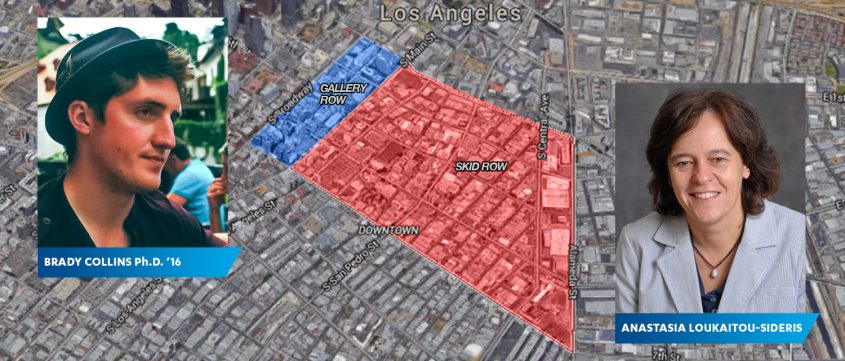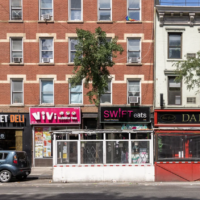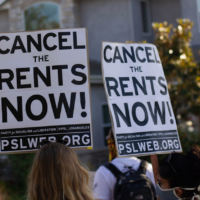
Gentrification, Growth or Something in Between? UCLA Urban Planners’ report on the impact of cultural revitalization efforts on L.A.’s Gallery Row and adjacent Skid Row is named ‘Best Paper’ by Town Planning Review
By Stan Paul
In the early 2000s, author and urban theorist Richard Florida popularized the concept of the “creative class,” with its purported ability to revitalize cities. This notion has encouraged culture-based economic growth strategies and approaches — by public officials and private developers alike — in urban centers such as Los Angeles.
Looking back after a decade with an update and republication of his book, The Rise of the Creative Class, Florida re-emphasized his point that creativity requires diversity and that “an openness to all kinds of people … was no private virtue but an economic necessity,” explaining that areas that are “most open-minded gain the deepest economic advantage.”
“Yet, as I write these words, all is far from well: The great promise of the Creative Age is not being met,” Florida said.
Consequently, two camps on the subject have emerged: one believes that cultural revitalization efforts accelerate growth, while the other says that gentrification and displacement are the outcome.
Urban planners at UCLA have taken a closer look at the effects of cultural revitalization by comparing two areas of Los Angeles known as Gallery Row and the adjacent Skid Row. Their report, “Skid Row, Gallery Row and the Space in Between: Cultural Revitalization and its Impacts on Two Los Angeles Neighborhoods,” was recently named “Best Paper” by Town Planning Review, a publication of Liverpool University Press.
“The urban growth and cultural revitalization currently taking place in the historic core of downtown Los Angeles is unprecedented, and yet downtown is also home to Skid Row, one of the largest concentrations of homeless individuals in the U.S.,” said Brady Collins, lead author of the study. Collins, who recently completed his Ph.D. in Urban Planning at UCLA, worked with UCLA Luskin Urban Planning professor Anastasia Loukaitou-Sideris on the report.
The authors describe cultural revitalization strategies as “promoting a neighborhood’s ethnic heritage, establishing a cultural or arts district or developing cultural and community centers or local museums.” Collins and Loukaitou-Sideris said the purpose of these strategies is to attract young urban professionals — the so-called Creative Class — as well as business growth and investment.
Collins said that, after conducting nearly a year of research, “I knew I had found something big, and something I thought was important to share.” The Boston native is currently a resident of Koreatown and has served as a member of the Wilshire Center-Koreatown Neighborhood Council.
In comparing Gallery Row, characterized by the authors as a linear district consisting of new art galleries, bars and restaurants, to the Skid Row area of Los Angeles, Collins and Loukaitou-Sideris said they sought to answer questions such as how various groups — from local residents, advocates and community organizations to public and private developers, as well as investors and local, state and federal government — shape the process of revitalization and whether cultural revitalization actually benefits only “wealthy gentrifiers.”
“Gentrification is not always a zero-sum game where gentrifiers win,” said Collins. “By providing a snapshot of the efforts by individuals working on the ground and behind the scenes in Skid Row to shape the social and physical landscape, we show how marginalized groups can use art and culture as a means for resistance.”
In recognizing this, Collins said that the concept of “the space in between” was constructed as “a fraught space between the haves and have-nots, between revitalization and displacement, where human agency and community organizing can create real power.”
“With housing affordability at a historic low in L.A., gentrification and displacement represent real concerns for a number of neighborhoods,” Loukaitou-Sideris said. “Our study, however, demonstrates that it may be mistaken to perceive even the most disadvantaged neighborhood as a powerless victim lacking agency and determination to prevent displacement.”
Nevertheless, Collins and Loukaitou-Sideris argue that local grassroots efforts cannot go it alone against “their own larger political interests and powerful real estate forces.” To ensure more equitable outcomes, the authors propose that public officials include affordable housing development, housing preservation and local economic development in planning considerations.
As “Best Paper” published in the June 2016 volume of Town Planning Review, the report will be free to access for three months at the Liverpool University Press website.








Leave a Reply
Want to join the discussion?Feel free to contribute!